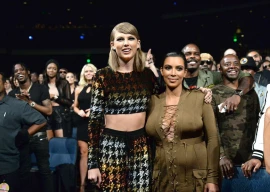
“Who are these middle classes?” the 20th century British prime minister, Harold Macmillan, once asked famously. We do not know if he received a satisfactory answer, but his question still bewilders economists and sociologists, who have yet to come up with a perfect definition of the middle class.
A loosely defined term, the middle class is generally considered to be that stratum of society whose members are neither very rich nor very poor.
While most economists put more emphasis on one’s income and expenditure levels, sociologists tend to place a higher premium on lifestyle and education to determine whether one belongs to the middle class.
According to Dr Farrukh Saleem, executive director of the Islamabad-based Centre for Research and Security Studies (CRSS), the simplest and quickest way to calculate the number of people belonging to the proverbial middle class in Pakistan is to take the median national income, draw a line 10% above that median, draw another line 10% below that median, and capture the area in-between. That, he said, would be the middle class.
“This is the quickest way to quantify the middle class in Pakistan. However, it can’t be called perfect,” Saleem said.
There are at least a dozen income- and expenditure-based approaches, which are recognised and used internationally, to quantify the middle class. These definitions, or approaches, rely on income intervals, expenditure, population quintiles, purchasing power parity (PPP) and poverty line etc.
When applied in Pakistan’s context, their results vary: While one income-based approach estimates Pakistan’s middle class to be just 1.8% of the total population, an expenditure-based approach says it is 81.3%.
So what is the ‘right’ approach to quantify the Pakistani middle class?
“The middle class shouldn’t be confused with ‘middle income,’ as class is a multidimensional phenomenon, which can’t be explained by income alone,” said Dr Durre Nayab, who heads the department of population studies at the Islamabad-based Pakistan Institute of Development Economics (PIDE).
Nayab recently published a paper titled, “Estimating the middle class in Pakistan,” in which she used a weighted composite index of five sub-indices, namely income, education, housing, lifestyle and occupation.
The fact that her study allows for education, housing, lifestyle and occupation while determining the size of the Pakistani middle class makes it more credible than a solely income-based estimation.
Using Pakistan Social and Living Standards Measurement Survey (2007-08), Nayab’s paper says the size of the broadest middle class in Pakistan is 35% of the total population.
“The middle class is associated with non-manual professions,” Nayab said while talking to The Express Tribune. “As we go up the class ladder, more and more people employed in ‘professional’ occupations are found. Also, the middle class is associated with college education.”
Her paper also concludes that the middle class is more of an urban phenomenon with a bigger presence in urban areas of Pakistan.
Considering that The Economist estimates more than half the world’s population is part of the middle class, the idea that Pakistan has roughly 60 million middle-class people doesn’t seem implausible.
This matters a great deal because as the rest of the world progresses economically, their companies and governments are increasingly focused on their middle classes. If Pakistan is to join that race, and compete effectively, then our companies and government must acknowledge the size, scope and contours of our middle class in their planning.
The Express Tribune is launching this series of articles in which we hope to help explore just who our middle class is, how they got there and exactly how money is being made by those who cater to their changing lifestyles.
Published in The Express Tribune, November 21st, 2011.
COMMENTS (4)
Comments are moderated and generally will be posted if they are on-topic and not abusive.
For more information, please see our Comments FAQ





































well i think the cause of confusion for assessment of middle class in our case is as there exists a disparity in assessment of income levels since we have off the book economy. Otherwise a high level expenditure as shown by the cpg could not have been existent!
@akbar:
No absolute numbers, please. It should be expressed as a % of the total.
Excellent read.
Very interesting facts .I have have heard that middle class is 25 crore in India .Can u give some references of articles on this topic?